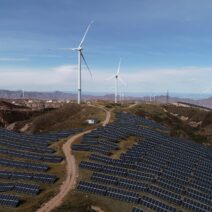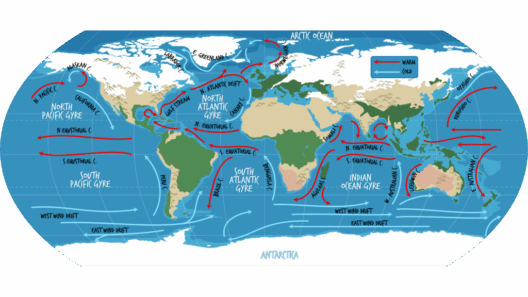In the evolving landscape of environmental policy, the California Climate Credit stands as a pivotal initiative aimed at mitigating the impacts of climate change while simultaneously alleviating some of the financial burdens faced by residents. For many California residents, this credit is not merely an economic benefit but a reflection of the state’s commitment to transitioning towards a sustainable, low-carbon economy.
The California Climate Credit is a quarterly financial incentive provided to utility customers, funded through the state’s cap-and-trade program. Implemented as part of the broader effort to combat greenhouse gas emissions, the cap-and-trade program mandates that certain industries limit their carbon emissions, issuing emissions allowances that can be bought and sold. Proceeds from these transactions are then allocated to support clean energy initiatives and provide financial credits to consumers, thereby fostering a culture of conservation and encouraging the adoption of greener practices.
From an observational standpoint, many residents express curiosity regarding the fluctuations in the amounts credited to their utility bills. The variability contributes to a collective sense of intrigue, as users wonder what factors influence the total they receive. This uncertainty often sparks deeper inquiries into how legislative measures are intertwined with everyday lives, prompting discussions on the effectiveness and transparency of such environmental policies.
The credit aims to benefit nearly every residential customer of utilities in California. The amount varies annually and quarterly, typically fluctuating based on auction proceeds from emissions allowances. As reported, in recent distributions, customers have seen credits averaging around $146 annually. In some cases, households may receive credits that range from approximately $80 to upwards of $91.17, reflecting a tangible connection to the state’s environmental stewardship.
To claim the California Climate Credit, residents need to take note of one fundamental aspect: the credit is automatically applied to qualifying accounts. While this simplicity is advantageous, it does require homeowners and renters alike to ensure that their utility accounts are in good standing and up-to-date. Most utility companies, such as Pacific Gas and Electric (PG&E), provide clear information about the credit on their billing statements, helping customers discern their eligibility.
It is essential to comprehend not only the benefits of this credit but also its broader implications as part of California’s overall climate strategy. Beyond mere financial relief, the Climate Credit promotes energy efficiency and environmental responsibility, encouraging residents to reflect on their energy consumption patterns. As climate change looms as one of the most critical issues of our time, such initiatives serve to foster a communal ethos centered around sustainability and environmental preservation.
However, despite its merits, the Climate Credit program does face criticism. Some detractors argue that while the credits provide short-term financial relief, they do not sufficiently address the underlying issues of climate change or the systemic causes of energy inequality. Individuals in lower-income brackets may still struggle with high energy bills, even after receiving credits. This discrepancy raises questions about the adequacy of measures adopted by the state and whether they effectively target the most vulnerable populations. The conversation surrounding these credits pushes beyond the financial aspect and taps into deeper societal concerns—equity, access, and the urgent need for systemic change.
The disbursal of the credit typically occurs biannually, coinciding with the months of April and October. This timing intentionally aligns with the seasons when energy usage often peaks, primarily due to the increased reliance on heating and cooling systems. By providing credits during these periods, California aims to cushion the financial strain on households that might otherwise exacerbate their energy costs. As a result, the Climate Credit reflects a strategic alignment of environmental policy with socioeconomic realities.
The process for consumers is straightforward; however, occasional complexities arise with utility management. If one finds discrepancies in their credit or believes they are not receiving the expected amount, it is advisable to contact their utility provider for clarification. Navigating the channels of customer service effectively can ensure that individuals maximize their benefits. It’s vital to stay informed about any updates or changes regarding the credits, particularly as policies and programs evolve in response to California’s dynamic climate challenges.
For those who wish to delve deeper, California residents can explore additional steps to enhance their energy efficiency beyond merely receiving credits. Participation in energy-saving programs, exploring renewable energy options, and reducing overall consumption can collectively amplify the impact of initiatives like the Climate Credit. These proactive measures complement the state’s emissions reduction goals while promoting a sustainable lifestyle—an ethos that resonates with many Californians’ values.
As the state of California navigates the complexities of climate change and its effects on society, the California Climate Credit remains a vital tool in both economic and environmental strategy. Its capacity to enhance consumer awareness, drive financial relief, and inspire sustainable practices serves as a remarkable example of how proactive governmental measures can simultaneously tackle ecological and economic challenges. It invites Californians to reflect on their roles within the global concerted effort against climate change while contemplating deeper inquiries about equity, inclusion, and sustainable progress in the face of adversity.
In summation, the California Climate Credit exemplifies how state policy can intersect with daily life, providing not only immediate financial respite but also encouraging broader considerations of energy consumption, environmental impact, and community engagement. In a time when climate awareness is critical, such initiatives can foster a stronger, more resilient public commitment to address one of the most pressing issues of our era.






